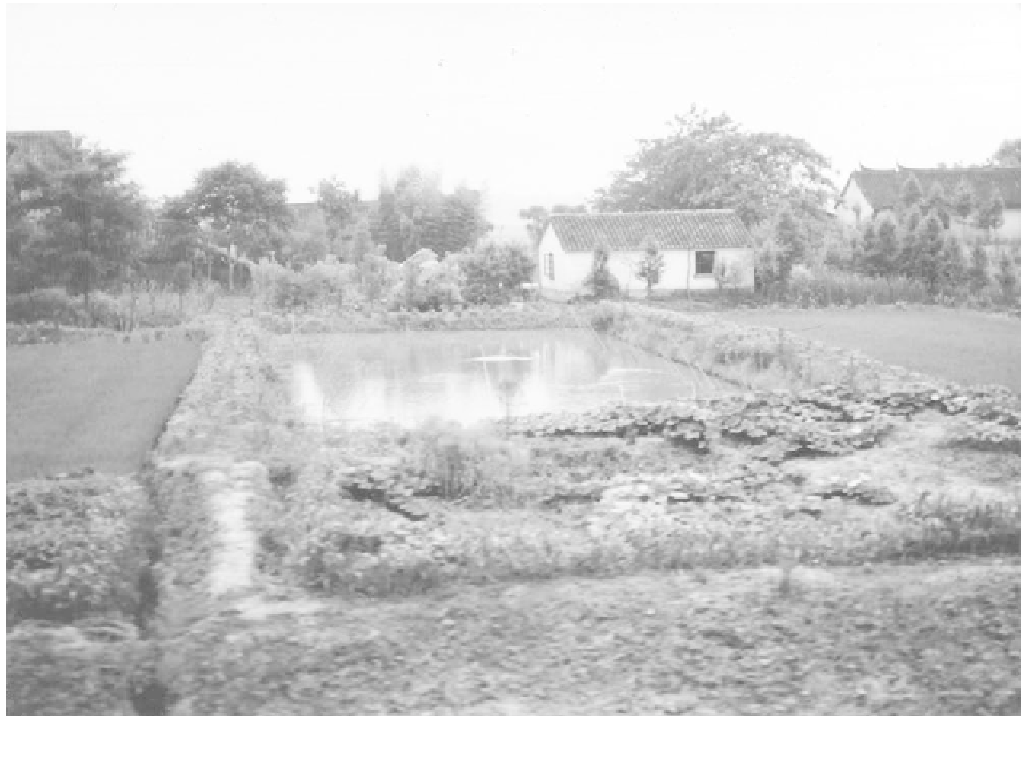Agriculture Reference
In-Depth Information
FIGURE 21.2
The traditional Chinese home garden agroecosystem, with pond, paddy, and vegetable beds.
The continual return
of all forms of organic matter to the agroecosystem maintains a high productivity index.
a certain harvest output. For an intensive annual cropping
system, the threshold value for sustainability is 2. At this
level, the amount of biomass returned to the system each
season is equal to what is removed as yield, which is the
same as saying that half of the biomass produced during
the season is harvested, and half returned to the system.
NPP does not vary much between system types (it
ranges from 0 to 30 t/ha/yr); what really varies from sys-
tem to system is standing biomass (it ranges between 0
and 800 t/ha). When a larger portion of NPP is allowed
to accumulate as biomass or standing crop, the PI
increases and so does the ability to harvest biomass with-
out compromising sustainable system functioning. One
way of increasing the standing biomass of the system is
to combine annuals and perennials in some alternating
pattern in time and space (Figure 21.2).
To be able to apply the PI in the most useful manner,
we must find answers to a number of questions: How can
higher ratios be sustained over time? How is the ratio of
the return of biomass to the amount of biomass harvested
connected to the process of productivity? What is the
relationship between standing crop or biomass in an agro-
ecosystem, and the ability to remove biomass as harvest
or yield?
E
COLOGICAL
C
ONDITIONS
OF
S
USTAINABLE
F
UNCTION
The ecological framework that has been described in this
topic provides us with a set of ecological parameters that
can be studied and monitored over time to assess move-
ment toward or away from sustainability. These parameters
include such things as species diversity, organic matter
content of the soil, and topsoil depth. For each parameter,
agroecological theory suggests a general type of condition
or quality that is necessary for sustainable functioning of
the system — high diversity, high organic matter content,
and thick topsoil. The specific rates, levels, values, and
statuses of these parameters that together indicate a con-
dition of sustainability, however, will vary for each agro-
ecosystem because of differences in farm type, resources
used, local climate, and other site-specific variables. Each
system, therefore, must be studied separately to generate
sets of system-specific indicators of sustainability.
The parameters listed in Table 21.3 provide a frame-
work for research focusing on what is required for sus-
tainable function of an agroecosystem from an ecological
perspective. Explanations of the role of each parameter in
a sustainable system are not provided here. The reader is

Search WWH ::

Custom Search